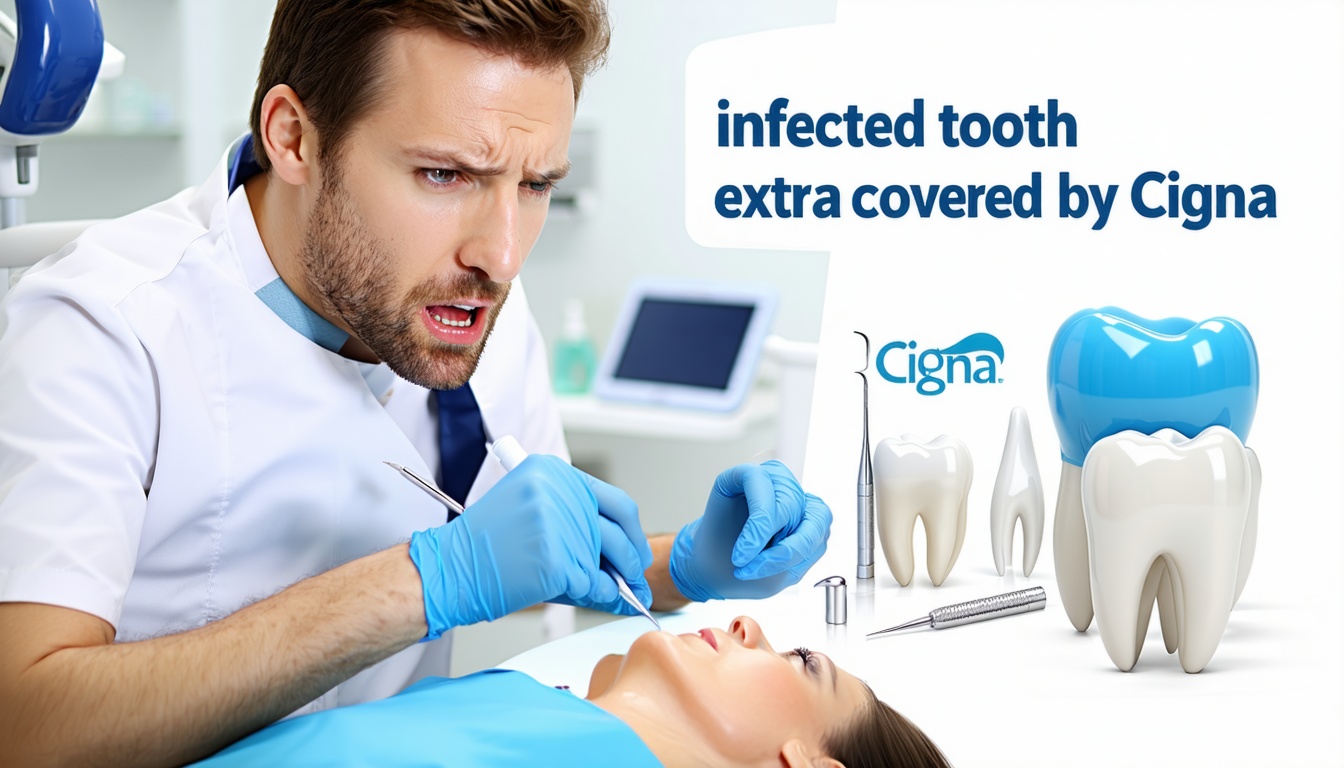
Understanding Cigna dental benefits
Before scheduling an extraction, you need to know how Cigna structures its dental coverage. Your Cigna plan may include both dental and medical components, each with its own set of benefits and requirements. By familiarizing yourself with these distinctions, you’ll be better equipped to anticipate your out-of-pocket costs and avoid unexpected bills.
Dental vs medical coverage
Cigna dental plans typically cover preventive and routine restorative services, while medically necessary procedures may fall under your medical benefits. For urgent scenarios—like an abscess or severe infection—your extraction might qualify as a medical expense rather than a routine dental service (Cigna). Key differences include:
Plan types and tiers
Cigna offers a range of plan designs that affect cost sharing and provider access. Typical options include:
Review your specific plan documents to confirm which tier applies to you and how your infected tooth removal will be processed.
Infected tooth extraction covered by Cigna
If you’re facing a serious dental infection, knowing whether Cigna treats your extraction as a dental or medical claim is crucial. Coverage often hinges on the severity of the infection, documentation from your dentist, and whether you’ve met plan prerequisites like waiting periods or deductibles.
Criteria for medically necessary extractions
Cigna generally requires clear evidence that an extraction is needed to prevent spread of infection or additional health complications. Common qualifying scenarios include:
Infection and abscess protocols
When you present with signs of an abscess—swelling, fever, persistent pain—your dentist will document clinical findings and submit a treatment plan to Cigna. In many cases, Cigna requires preauthorization for surgical extractions linked to health risks, ensuring your procedure meets medical necessity guidelines.
Estimating your cost share
Even with coverage, you’ll likely pay a portion of the extraction cost. Understanding your plan’s cost‐sharing structure helps you budget and compare options before moving forward with treatment.
Deductibles and coinsurance
Most Cigna DPPO plans impose an annual deductible before major services apply. After meeting your deductible, major restorative procedures—such as surgical extractions—often have coinsurance rates between 20% and 50%.
Annual maximum limits
Cigna dental benefits usually include an annual maximum, commonly ranging from $1,000 to $2,000 per enrollee. Once you hit that limit, additional services in the plan year are your responsibility.
Out-of-network expenses
If you choose a provider outside Cigna’s network, expect:
Typical cost-sharing summary
| Cost component | Typical range |
|---|---|
| Annual deductible | $50–$150 per person |
| Coinsurance | 20%–50% for major services |
| Annual maximum | $1,000–$2,000 |
| Waiting periods | 6–12 months for major procedures |
Getting preauthorization and claims
Securing Cigna’s approval and submitting claims promptly ensures you minimize delays and unexpected bills. Familiarize yourself with both preauthorization protocols and claim-filing procedures.
Preauthorization requirements
For surgical extractions tied to infection or complicated anatomy, Cigna often requires prior approval. Your dentist or oral surgeon will typically:
Filing your claim
After your procedure, your provider usually files claims directly with Cigna. If you need to submit on your own, follow these steps:
Tracking reimbursements
Use your Cigna online account or mobile app to monitor claim status, view payments issued, and check any outstanding patient responsibility. Promptly address any requests for additional documentation to avoid processing delays.
Finding an in-network provider
Choosing a Cigna-contracted dentist or oral surgeon maximizes your benefits and reduces surprise costs. In-network providers agree to Cigna’s negotiated rates, limiting balance billing.
Using Cigna’s directory
Locate providers by logging into your Cigna account and accessing the “Find a Dentist” tool. Filters allow you to specify:
Cigna in-network emergency dentist
When infection strikes after hours or on weekends, you can still find in-network care:
Alternative care options
If you’re uninsured, out of network, or awaiting Cigna preauthorization, other resources can bridge the gap and relieve pain while you finalize coverage.
Community health centers
Charlotte’s federally qualified health centers offer sliding-scale fees and emergency dental services, including extractions. In 2023, these centers provided 15.4 million dental visits nationwide, serving patients without insurance (HRSA). Contact local clinics for:
Supplemental dental plans
Short-term or discount plans can help cover out-of-pocket costs. Consider:
Compare your options on our insurance that covers tooth extractions page to find a plan that fits your budget.
Emergency steps and tips
When infection pain peaks, prompt action can prevent complications. Follow these guidelines to protect your health and maintain your options for Cigna coverage.
Recognizing serious symptoms
Look for warning signs that require immediate attention:
Immediate first aid measures
While you arrange professional care:
When to visit an ER
If swelling impairs breathing or swallowing, go to your nearest emergency department. Document your visit and request a medical report—this can support a Cigna medical claim for your extraction.
Additional resources and support
Navigating insurance details during a dental crisis can feel overwhelming. Leverage these support channels to stay informed and on track.
Cigna customer support
For personalized assistance:
Local urgent dental clinics
Several Charlotte practices specialize in emergency care and accept various insurance plans:
Check their insurance policies on emergency dental insurance accepted before visiting.
Next steps and takeaway
When infection strikes, understanding how Cigna handles your extraction empowers you to make informed decisions. Review your plan documents, verify in-network providers, and initiate preauthorization promptly. If you need immediate relief or interim support, consider community health centers or supplemental plans. By taking these steps, you’ll minimize stress, control costs, and get back to healthy, pain-free living.


